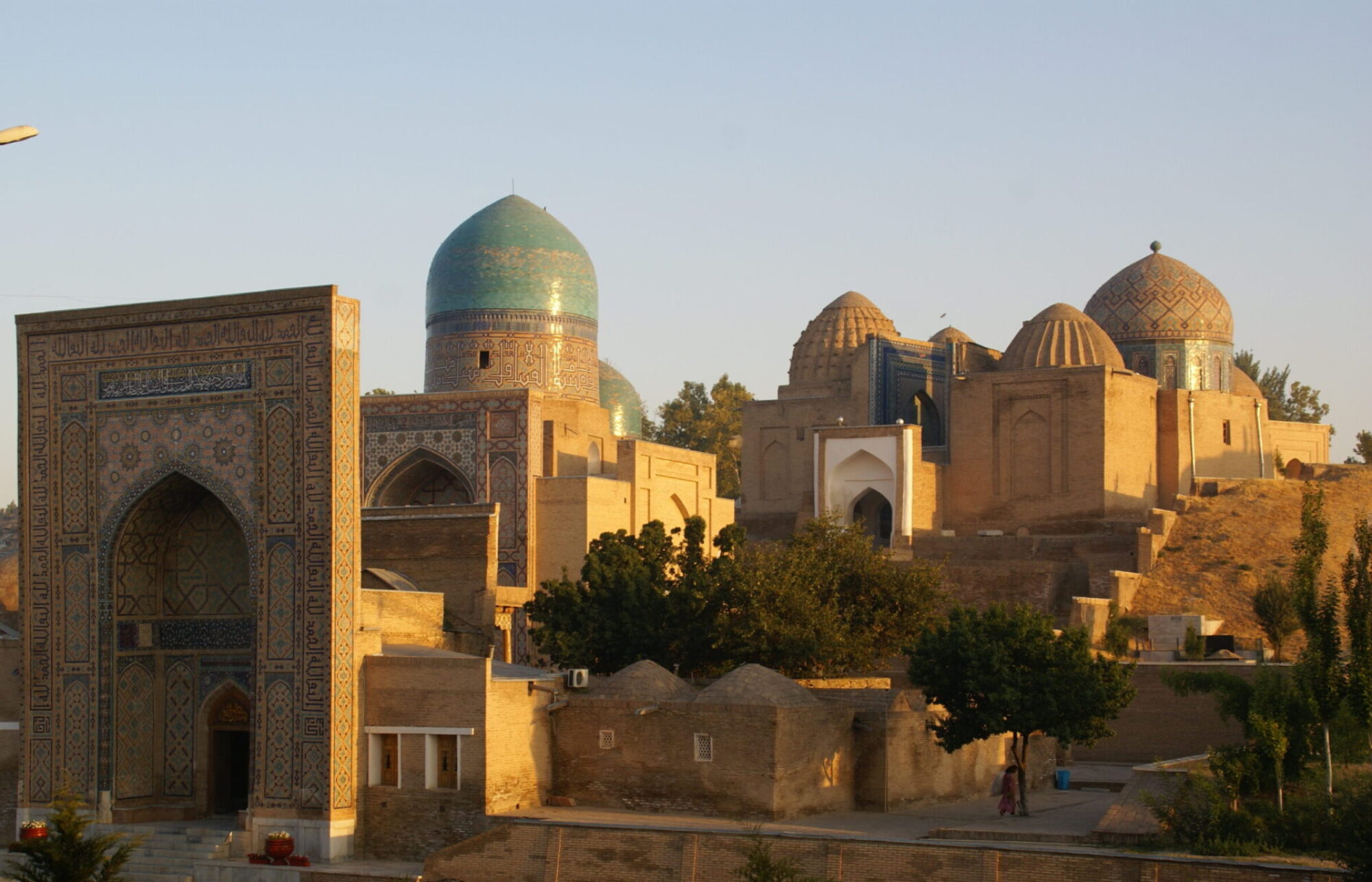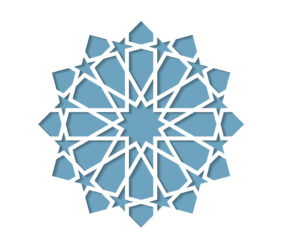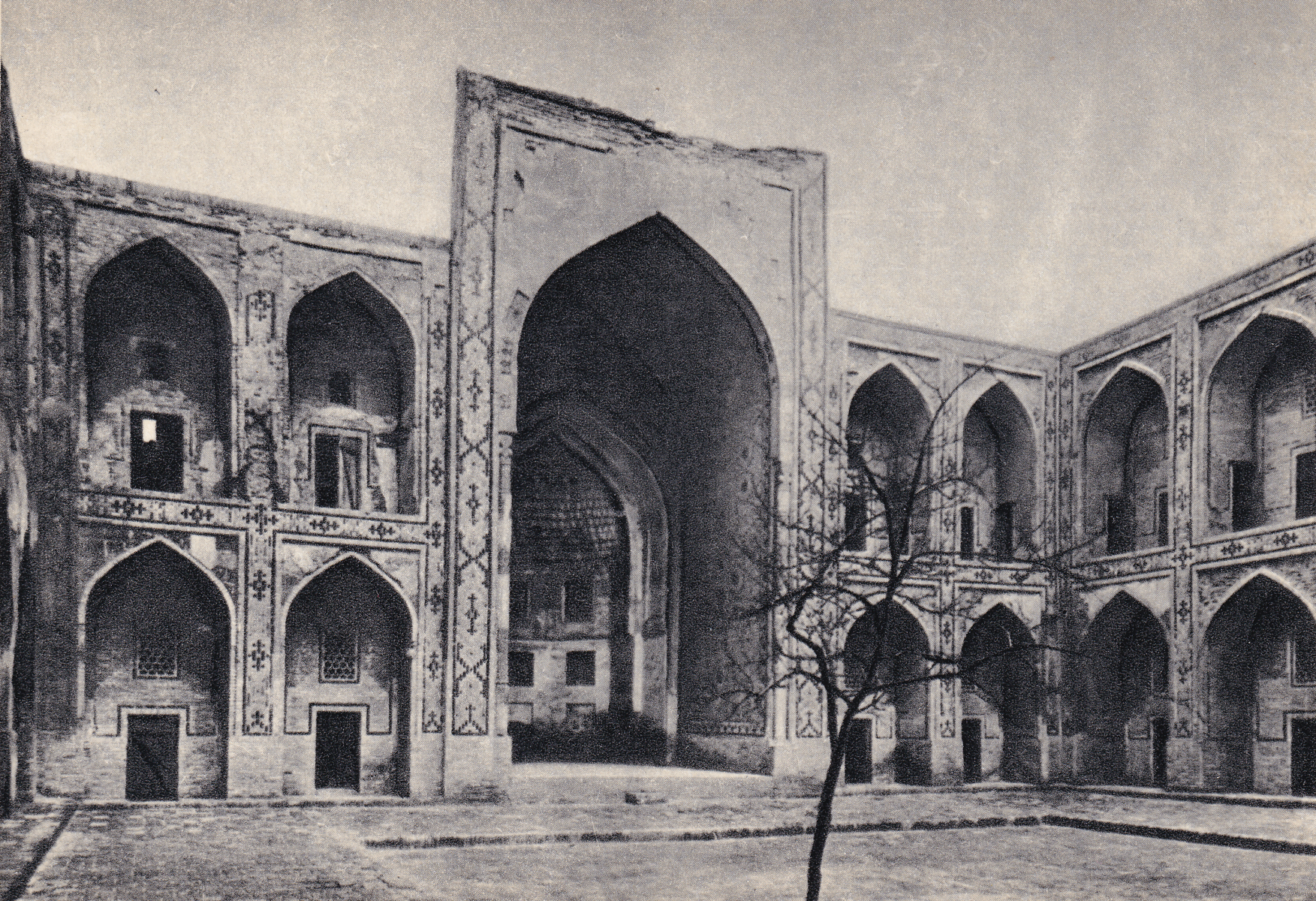The Ulugh Beg Madrasa (1417-1420) in Bukhara is contemporary with his madrasa in Samarqand. However, it is smaller in size and has only two iwans (monumental gates) along the main longitudinal axis. The open courtyard is surrounded by two storeys of barrel-vaulted hujras (student cells). The main entrance leads to a complex vestibule with two lateral dome chambers: a mosque (to the west) and a lecture room (to the east) used currently as a museum. The domes have complex structures consisting of polygonal drums with 16 arched bays resting on two tiers of large muqarnas elements.
The exterior of the madrasa is covered in patterns created by alternating glazed and unglazed brick in light and dark cobalt blue. This technique is widely used in Timurid architecture and is known as banna’i (builder’s bond) or hazar baf (thousand-weave). The blue glazed brick forms texts in square Kufic Arabic script that spell the names of the prophet Muhammad and Allah. The technique was very effective for creating monumental inscriptions that covered the large exterior surfaces from top to bottom. These could be read from afar and were meant to underline the monumentality of the structures.
The entrance portal is framed by a spiral column covered in polychrome tile mosaic assembled from thousands of pieces cut from monochrome glazed tiles. The predominant colours are cobalt blue, brown, green, black and white. In addition, the columns surrounding the iwan in the inner courtyard are covered in polychrome underglaze haft rangi (seven colour) tiles with considerable gilding that is still visible today. The signature of the builder is recorded in a haft rangi tile above the main entrance portal and it reads: “Work of Ismail ibn Tahir ibn Mahmud al-banna’ al-Isfahani”.
The madrasa was restored in the 1950s and in the 1970s when the main epigraphic band around the entrance portal was fully reconstructed.
The Ulugh Beg Madrasa is situated along the main horizontal axes of the Medieval shahristan (the city proper). It forms an ensemble with the ‘Abd al-‘Aziz Khan Madrasa (1652). Several bazaars and caravanserais were built around this main commercial area to accommodate the booming trade. Taq-i Zargaran (the Bazaar of the Goldsmiths, 1569) is still housing small workshops to the west of the ensemble. However, in recent years the surrounding area has been overcrowded with private hotels and restaurants, virtually attached to the exterior walls of the Ulugh Beg Madrasa. This continuous construction has changed the urban axis and does not allow for direct access to the monuments.


